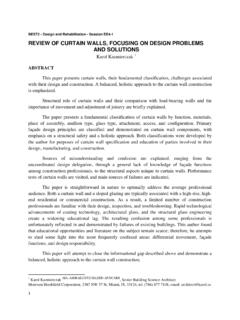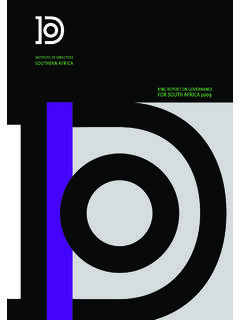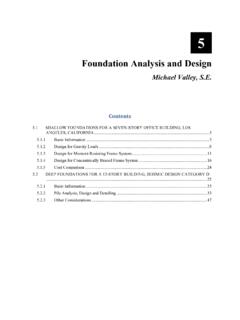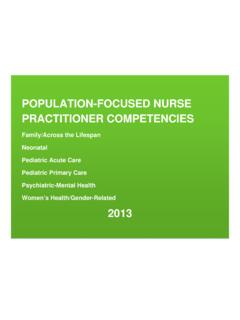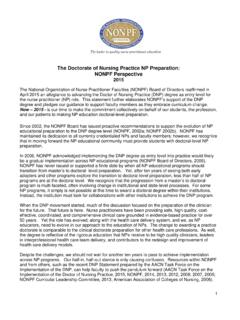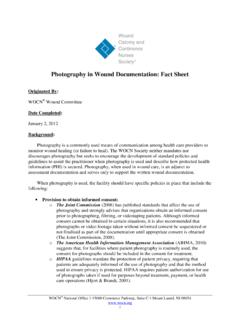Transcription of ISPAD Clinical Practice Consensus Guidelines 2018 ...
1 ISPAD Clinical Practice Consensus GUIDELINESISPAD Clinical Practice Consensus Guidelines 2018: Diabeticketoacidosis and the hyperglycemic hyperosmolar stateJoseph I. Wolfsdorf1| Nicole Glaser2| Michael Agus1,3| Maria Fritsch4|Ragnar Hanas5| Arleta Rewers6| Mark A. Sperling7| Ethel Codner81 Division of Endocrinology, Boston Children's Hospital, Boston, Massachusetts2 Department of Pediatrics, Section of Endocrinology, University of California, Davis School of Medicine, Sacramento, California3 Division of Critical Care Medicine, Boston Children's Hospital, Boston, Massachusetts4 Department of Pediatric and Adolescent Medicine, Medical University of Vienna, Vienna, Austria5 Department of Pediatrics, NU Hospital Group, Uddevalla and Sahlgrenska Academy, Gothenburg University, Uddevalla, Sweden6 Department of Pediatrics, School of Medicine, University of Colorado, Aurora, Colorado7 Division of Endocrinology, Diabetes and Metabolism, Department of Pediatrics, Icahn School of Medicine at Mount Sinai, New York, New York8 Institute of Maternal and Child Research, School of Medicine, University of Chile, Santiago, ChileCorrespondenceJoseph I.
2 Wolfsdorf, Division of Endocrinology, Boston Children's Hospital, 300 Longwood Avenue, Boston, : OF WHAT ISNEW/DIFFERENTR ecommendations concerning fluid management have been modifiedto reflect recent findings from a randomized controlled Clinical trialshowing no difference in cerebral injury in patients rehydrated at dif-ferent rates with either or |EXECUTIVE SUMMARYT hebiochemical criteriafor the diagnosis of diabetic ketoacidosis(DKA) are: Hyperglycemia (blood glucose >11 mmol/L [ 200 mg/dL]) Venous pH < or serum bicarbonate <15 mmol/L Ketonemia (blood -hydroxybuyrate 3 mmol/L) or moderate orlarge signs of DKAinclude: Dehydration, tachycardia,tachypnea, deep sighing respiration, breath smells of acetone, nauseaand/or vomiting, abdominal pain, blurry vision, confusion, drowsiness,progressive decrease in level of consciousness and, eventually, loss ofconsciousness (coma).Risk factors for DKAin newly diagnosed patients include youngerage, delayed diagnosis , lower socioeconomic status, and residence in acountry with a low prevalence of type 1 diabetes mellitus (T1DM).
3 Risk factors for DKAin patients with known diabetes includeomission of insulin for various reasons, limited access to medical ser-vices, and unrecognized interruption of insulin delivery in patientsusing an insulin following recommendations are based on currently avail-able evidence and are intended to be a general guide to DKA man-agement. Because there is considerable individual variability inpresentation of DKA (ranging from mild with only minimal dehydra-tion to severe with profound dehydration), some patients mayrequire specific treatment that, in the judgment of the treating phy-sician, may be within or, occasionally, outside the range of optionspresented here. Clinical judgment should always be used to deter-mine optimal treatment for the individual patient, and timelyadjustments to treatment (electrolyte composition and rate of infu-sion of rehydration fluids, insulin dose) should be based on ongo-ing, careful Clinical and biochemical monitoring of the patient' assessment shouldfollow the general guidelinesfor Pediatric Advanced Life Support (PALS) and includes: Imme-diate measurement of blood glucose, blood or urine ketones,serum electrolytes, blood gases and complete blood count;assessment of severity of dehydration, and level ofReceived: 11 April 2018 Accepted: 31 May 2018 DOI: 2018 John Wiley & Sons A/S.
4 Published by John Wiley & Sons LtdPediatric DiabetesOctober 2018;19 (Suppl. 27):155 (E). A second peripheral intravenous (IV) cathetershould be inserted(E). management should be conductedin a center experienced inthe treatment of DKA in children and adolescents and where vitalsigns, neurological status and laboratory results can be monitoredfrequently(E).Where geographic constraints require that manage-ment be initiated in a center with less experience and with fewerresources, there should be arrangements in place for telephone orvideoconference support from a physician with expertise inDKA(E).Meticulous monitoringof the Clinical and biochemical responseto treatment is necessary so that timely adjustments in treatmentcan be made when indicated by the patient's Clinical or laboratorydata(E).Goals of therapyare to correct dehydration, correct acidosis andreverse ketosis, gradually restore hyperosmolality and blood glucoseconcentration to near normal, monitor for complications of DKA andits treatment, and identify and treat any precipitating replacement should begin before starting insulin volume using crystalloids, as required, to restore peripheralcirculation(E).
5 Calculate the subsequent rate of fluid administration,including the provision of maintenance fluid requirements, aiming toreplace the estimated fluid deficit over 24 to 48 hours(A).Insulin therapy:begin with to U/kg/h at least 1 hourAFTER starting fluid replacement therapy(B).Potassium:If the patient is hyperkalemic,deferpotassium replace-ment therapy until urine output is documented. Otherwise, begin with40 mmol potassium/L (or 20 mmol potassium/L if the patient isreceiving fluid at a rate 10 mL/kg/h)(E).Bicarbonateadministration is not recommended except fortreatment of life-threatening hyperkalemia or unusually severeacidosis (vpH < ) with evidence of compromised cardiaccontractility(C).Warning signs and symptoms of cerebral edema include: Onsetof headache after beginning treatment or progressively worsening orsevere headache, slowing of heart rate not related to sleep orimproved intravascular volume, change in neurological status (restless-ness, irritability, increased drowsiness, confusion, incontinence), spe-cific neurological signs (eg, cranial nerve palsies), rising blood pressure,and decreased oxygen saturation(C).
6 In patients with multiple risk factors for cerebral edema(ele-vated serum urea nitrogen concentration, severe acidosis, severehypocapnia), have mannitol or hypertonic saline at the bedsideand the dose calculated(E). If neurologic status deterioratesacutely, hyperosmolar fluid therapy should be given immedi-ately(C).Prevention: management of an episode of DKA is not completeuntil an attempt has been made to identify and treat the without a preceding febrile illness or gastroenteritis in apatient with known diabetes is almost always the result of psychoso-cial problems and failure to appropriately administer new onset diabetes, DKA is frequently the consequence of adelay in diagnosis (E).The criteria forhyperglycemic hyperosmolar state (HHS) include: Plasma glucose concentration > mmol/L (600 mg/dL) Venous pH > ; arterial pH > Serum bicarbonate >15 mmol/L Small ketonuria, absent to mild ketonemia Effective serum osmolality >320 mOsm/kg Altered consciousness (eg, obtundation, combativeness) or sei-zures (in approximately 50%)In HHS,the goals of initial fluid therapy are to expand the intra-and extravascular volume, restore normal renal perfusion and promotea gradual decline in corrected serum sodium concentration and HHS,begininsulin administrationat a dose of U/kg/h once plasma glucose is decreasing less than 3 mmol/L(50 mg/dL) per hour with fluid alone(C).
7 DKA results from deficiency of circulating insulin and increasedlevels of the counterregulatory hormones: catecholamines, glucagon,cortisol, and growth ,2 Severe insulin deficiency occurs inpreviously undiagnosed T1DM and when treated patients deliber-ately or inadvertently do not take insulin, especially the long-actingcomponent of a basal-bolus regimen, or markedly reduce the dosesof insulin, for example, in association with an intercurrent illnesssuch as gastroenteritis. Patients who use an insulin pump can rap-idly develop DKA when insulin delivery fails for any insulin deficiency occurs when the concentrations ofcounterregulatory hormones markedly increase in response to stressin conditions such as sepsis, trauma, or febrile illness, which over-whelm homeostatic mechanisms and lead to metabolic decompensa-tion despite the patient taking the usual recommended dose combination of absolute or relative insulin deficiency andhigh counterregulatory hormone concentrations causes an acceler-ated catabolic state with increased glucose production by the liverand kidney (via glycogenolysis and gluconeogenesis) and impairedperipheral glucose utilization, which result in hyperglycemia andhyperosmolality.
8 Insulin deficiency and high counterregulatory hor-mone concentrations also increase lipolysis and ketogenesis andcause ketonemia and metabolic acidosis. Hyperglycemia exceedingthe usual renal threshold of approximately 10 mmol/L (180 mg/dL)together with hyperketonemia cause osmotic diuresis, dehydration,and obligatory loss of electrolytes, often aggravated by vomitingassociated with severe ketosis. These changes stimulate furtherstress hormone production, which induces more severe insulin resis-tance and worsening hyperglycemia and hyperketonemia. Lactic aci-dosis from hypoperfusion or sepsis may contribute to the acidosis(Figure 1).4If this cycle is not interrupted by exogenous insulin together withfluid and electrolyte therapy, fatal dehydration and metabolic acidosiswill is characterized by severe depletion of water and electro-lytes from both the intra- and extracellular fluid (ECF) compart-ments5; the typical range of losses is shown in Table 1. Despitetheir dehydration, patients generally continue to maintain normalblood pressure or even have high blood pressure,6possibly due toelevated plasma catecholamine concentrations, increased release of156 WOLFSDORFET hormone (ADH) in response to hyperosmolality (whichincreases blood pressure via V2 receptors), increased osmotic pres-sure from marked hyperglycemia, or other output persists because of glucosuria until extreme volumedepletion leads to a critical decrease in renal blood flow and glo-merular filtration.
9 At presentation, the specific deficits in an individ-ual patient vary depending upon the duration and severity ofillness, the extent to which the patient was able to maintain intakeof fluid and electrolytes, and the content of food and fluids con-sumed before coming to medical attention. Consumption of fluidswith a high-carbohydrate content (juices or sugar-containing softdrinks) may exacerbate the , thoughuncommonly, modest hyperglycemia in the setting of severe acidosismay be an indication that the patient has maintained increasedwater intake and may be only modestly hypovolemic. Rapid empty-ing of stomach contents containing an abundant quantity of sugar,which occurs as gastroparesis is relieved with therapy, accounts forthe rise in plasma glucose concentration observed in some patientsafter onset of therapy despite ongoing large loss of glucose in manifestations of diabetic ketoacidosis Dehydration Tachypnea; deep, sighing (Kussmaul) respiration Nausea, vomiting, and abdominal pain that may mimican acute abdominal condition Confusion, drowsiness, progressive obtundation, andloss of consciousnessData are from measurements in only a few children 13In any individual patient, actual losses may be less ormore than the ranges shown in Table methods for determining maintenance water requirementsin children are commonly used:*the Holliday-Segar formula14(shownin Table 1), a simplified Holliday-Segar formula (see below), and a for-mula based on body surface area for children who weigh more than10 kg (1500 mL/m2/24 h).
10 15 (shown in Table 1) Maintenance electrolyte requirements inchildren are per 100 mL of maintenance IV ,16 Simplified method based on Holliday-Segar: <10 kg 4 mL/kg/h;11-20 kg 40 + 2 mL/kg/h for each kg between 11 and 20; >20 kg60 + 1 mL/kg/h for each kg > avoid excessive fluid administration in obese patients, fluid cal-culations should be based on an approximation of ideal body weightfor of Diabetic Ketoacidosis FFA to liver Ketogenesis LipolysisAcidosis Alkali reserveAbsolute insulin deficiencyStress, infection or insufficient insulin Counterregulatory Hormones Glucagon Cortisol Catecholamines Growth Hormone Proteolysis Protein synthesis Glucose utilization Gluconeogenic substrates GlycogenolysisGlucosuria (osmotic diuresis)Hyperosmolarity LactateDecreased fluid intakeHyperglycemia GluconeogenesisorImpaired renal functionLoss of water and electrolytesDehydrationFIGURE 1 Pathophysiology of diabetic ketoacidosis. Copyright 2006 American Diabetes Association. From diabetes care, , 2006:1150-1159.


